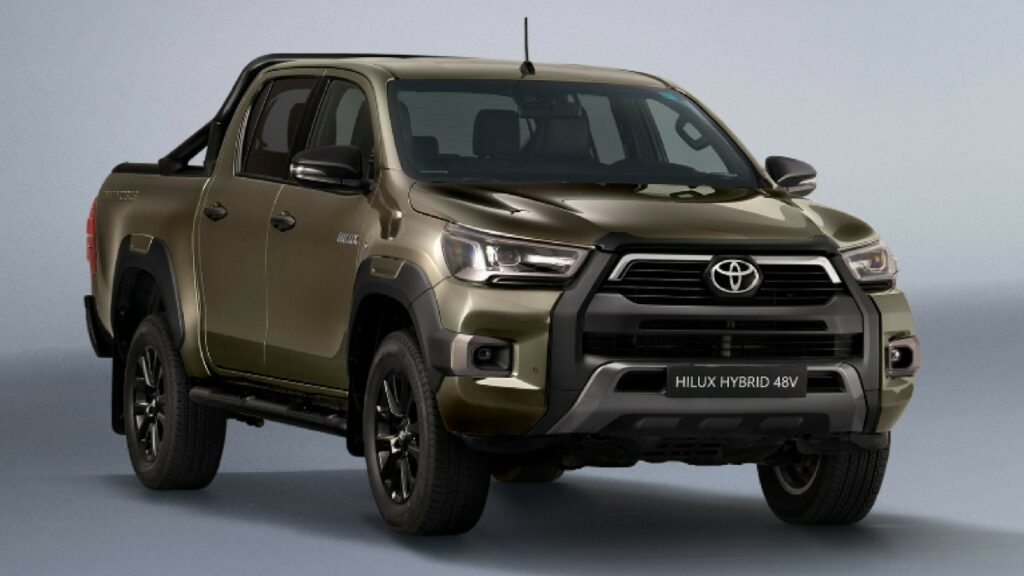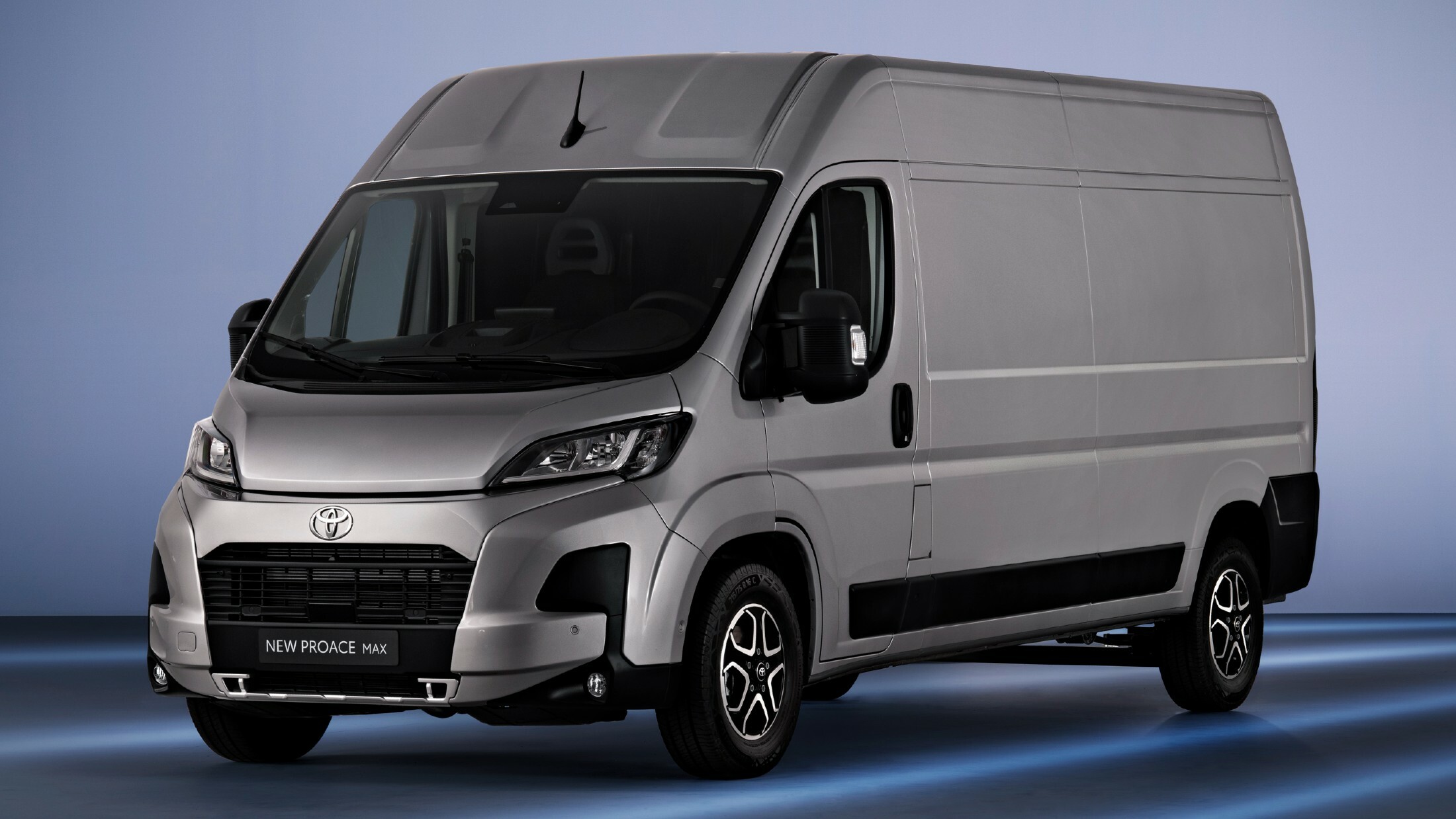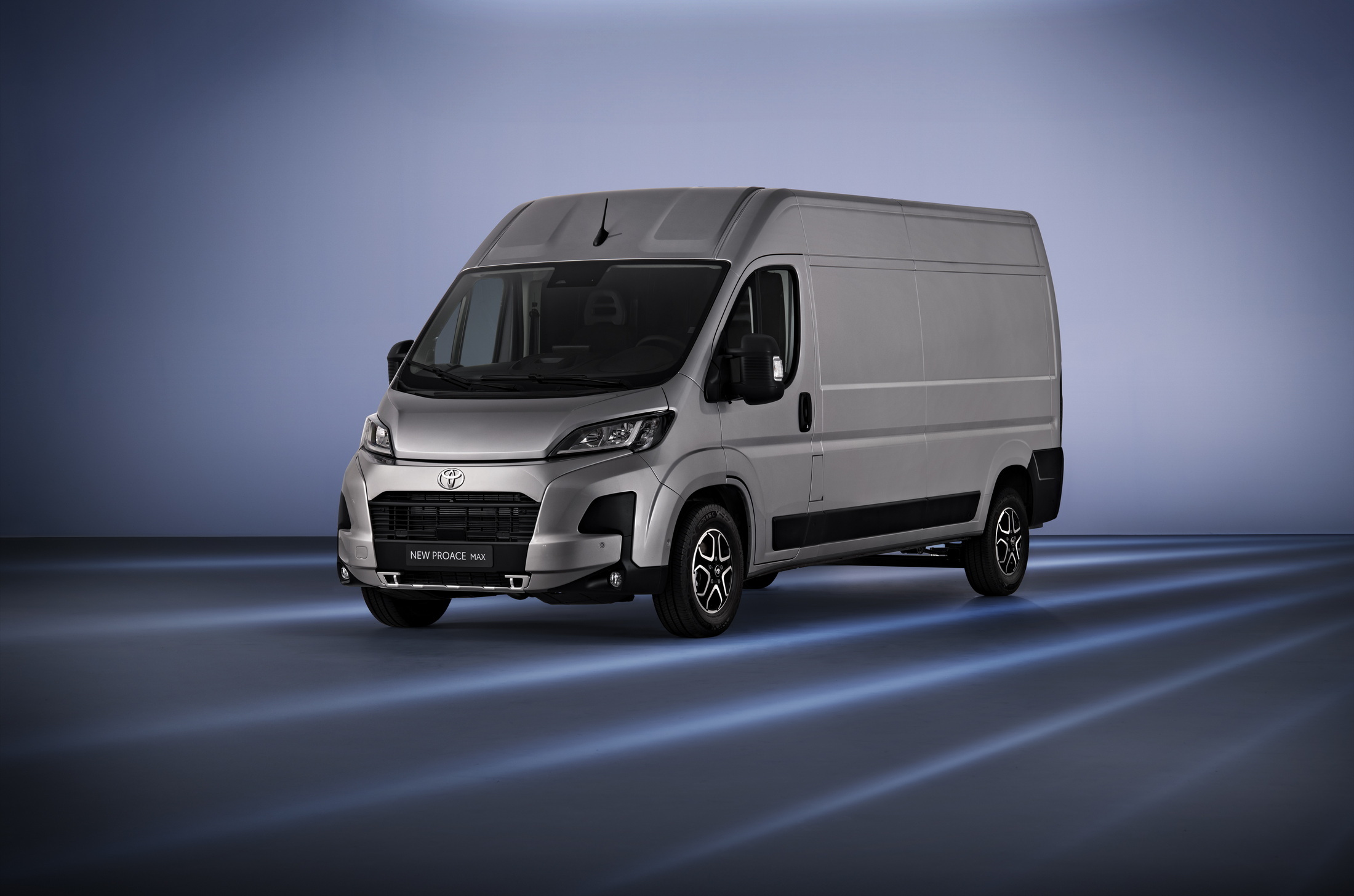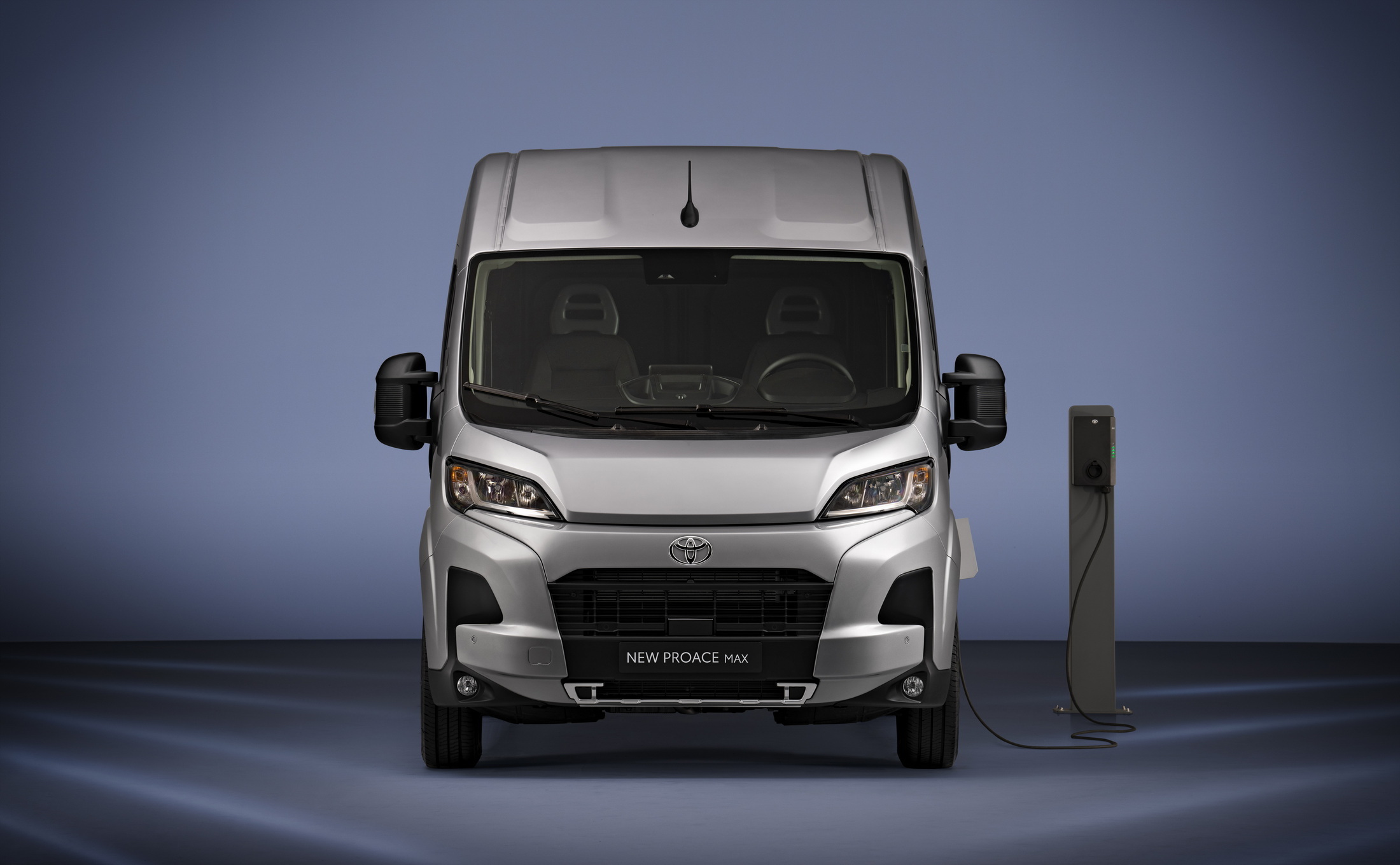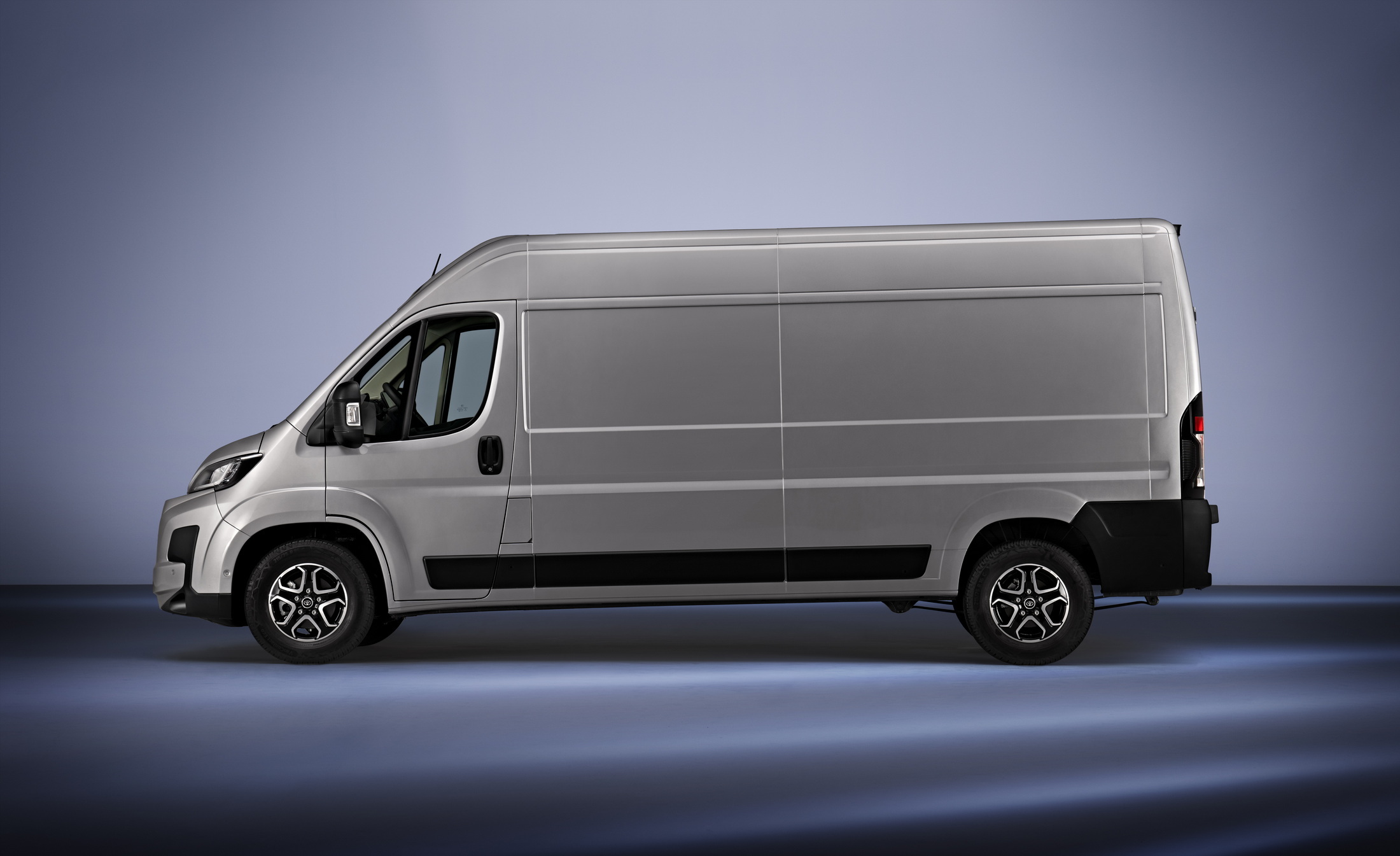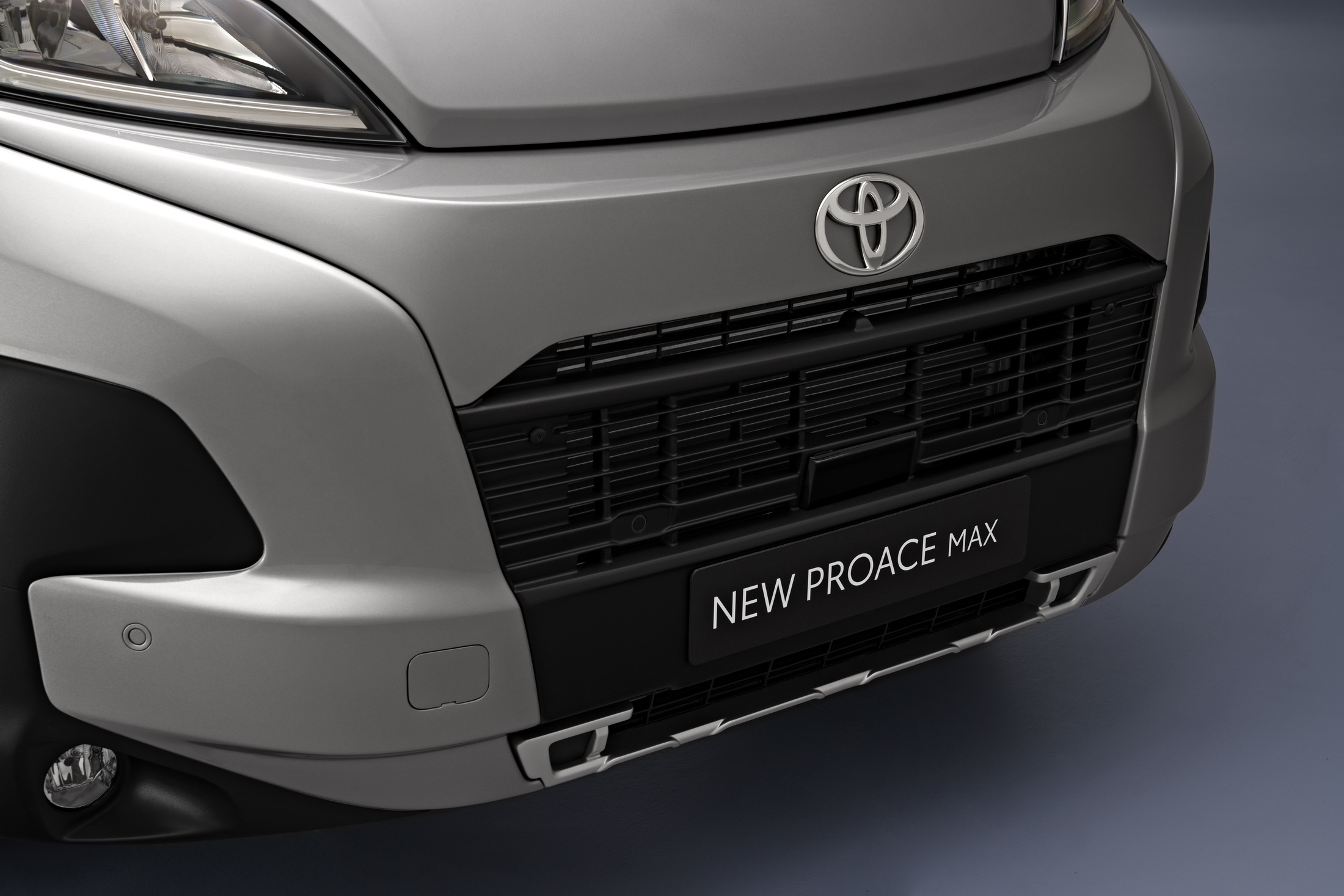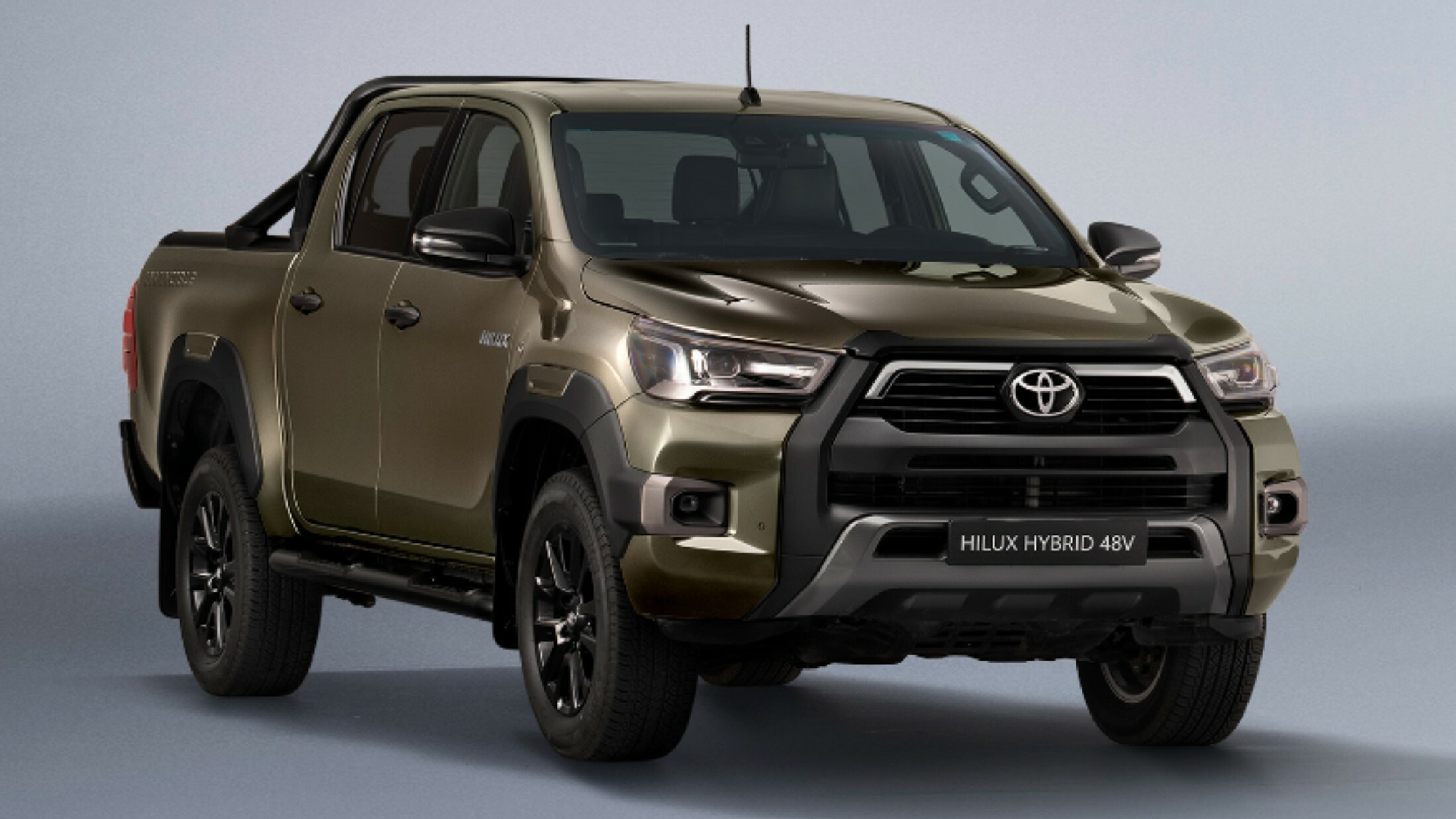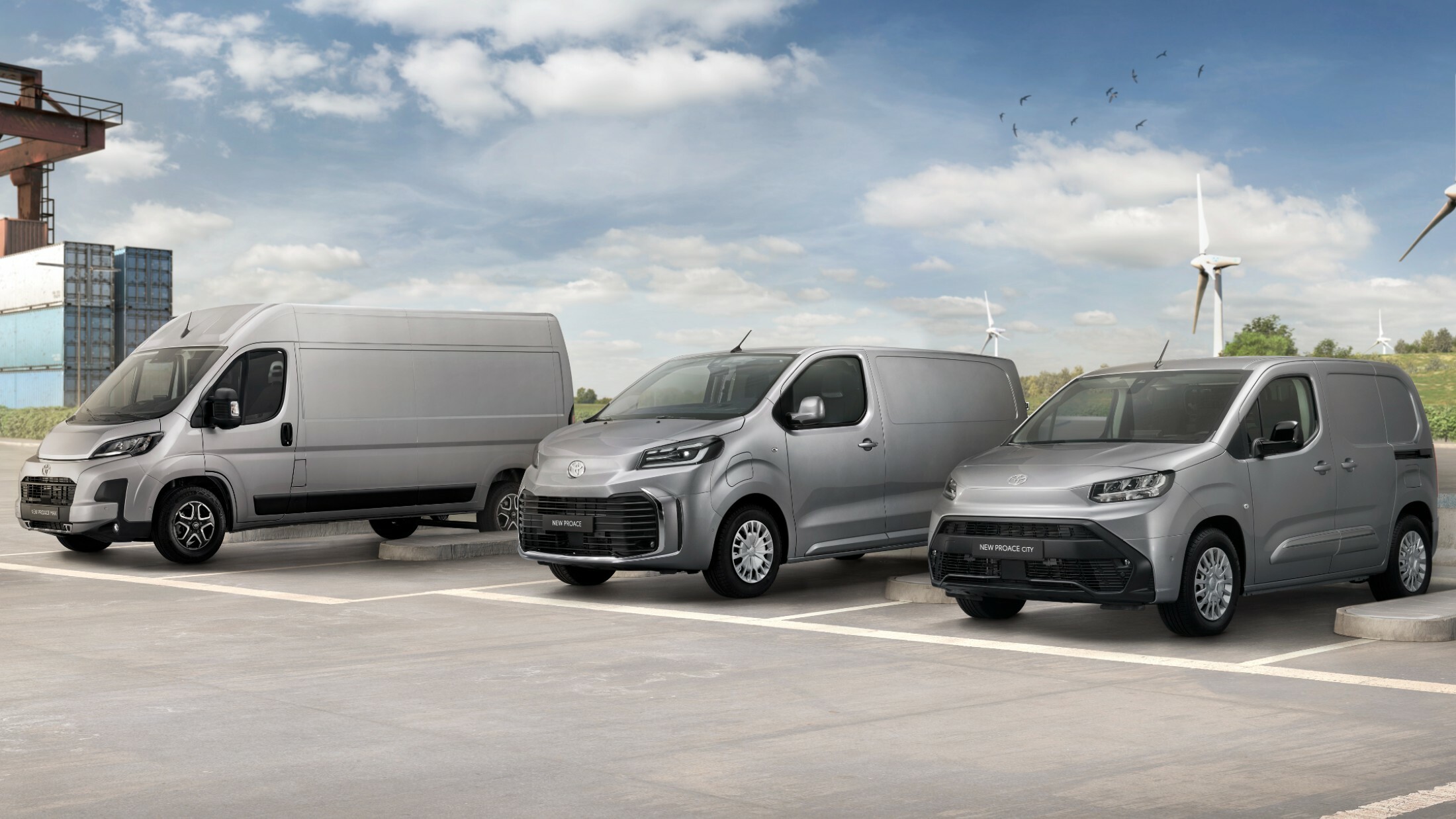Toyota expands its collaboration with Stellantis, adding another rebadged model to its LCV portfolio. The Toyota ProAce Max marks the automaker’s entry into Europe’s large van segment, joining the facelifted ProAce and ProAce City which are also based on Stellantis underpinnings. All three vans are available with fully electric powertrains. Furthermore, Toyota launched the electrified version of the aging Hilux, upgrading the diesel powertrain with 48V mild-hybrid technology for improved efficiency.
As you may have noticed, the Toyota ProAce Max is a sibling to the recently facelifted Fiat Ducato, Citroen Jumper, Peugeot Boxer, Opel Movano, and Ram ProMaster. The only Toyota-specific elements are the emblems and the redesigned nose. The rest of the bodywork including the full-LED lighting units and the 16-inch rims is shared with the other large vans by Stellantis. The same applies to the interior which benefits from the latest infotainment, ADAS, and connected services.
More: Stellantis Drops 12 New Electric Delivery Vans All At Once
The ProAce Max van is available in 6 configurations (2 wheelbase lengths, 3 lengths, and 3 heights) offering a cargo capacity of up to 17 m³ (600 cubic feet). Furthermore, the company offers the LCV in one-way or three-way tipper and dropside forms, Chassis, Platform, and Crew Cab layouts.
The ProAce Max has a WLTP range of up to 420 km (261 miles) thanks to a 110 kWh battery pack. As with the Fiat E-Ducato and the other mechanically related vans, the fast charging capability of up to 150 kW allows it to recharge from 0-80% in less than an hour. Toyota didn’t specify whether the large van will also be available in diesel form.
Facelifted ProAce And ProAce City With Increased Electric Range
The other two vans – ProAce and ProAce City – are facelifted for 2024, gaining redesigned bumpers and headlights. The new nose adds a little bit of extra Toyota flavor into the mix, even though the rest of the bodywork is shared with their Fiat, Citroen, Peugeot, and Opel siblings. The LCV models retain the same cargo capacities of 6.6 m³ (233.1 cubic feet) for the ProAce and 4.4 m³ (155.4 cubic feet) for the ProAce City. The same updates are inherited by the passenger versions – namely the 9-seater ProAce Verso and the 7-seater ProAce City Verso.

The electric versions of the vans benefit from increased range figures compared to their predecessors. More specifically, the ProAce (midsize van) offers a WLTP range of up to 350 km (218 miles), while the electric ProAce City (compact van) can travel up to 330 km (205 miles) between charges. Again, Toyota didn’t mention any other powertrain options although sibling vans are offered with petrol and diesel engines.
Mild-Hybrid Diesel For The Hilux
A new electrified diesel powertrain breathes new life into the eight-generation of the Toyota Hilux which has been around since 2015 with two facelifts in 2017 and 2020. The Hilux Hybrid 48V comes fitted with an updated version of the 2.8-liter four-cylinder turbodiesel featuring a 48-volt mild hybrid system comprising an electric motor/generator and a small battery pack.
Toyota didn’t announce the detailed specifications of the powertrain but an earlier press release from Toyota Australia mentioned a 10% improvement in the fuel efficiency of the midsize pickup. At the same time, electrification allegedly enhances off-road performance thanks to “smoother acceleration” and “regenerative braking”. Last but not least, the mild-hybrid pickup retains the 3,500 kg (7,717 pounds) towing capability and 1,000 kg (2,205) maximum payload capacity of its diesel-only predecessor.
Pricing of the updated Toyota Professional lineup in Europe will be announced closer to the market launch which is expected in early 2024.




